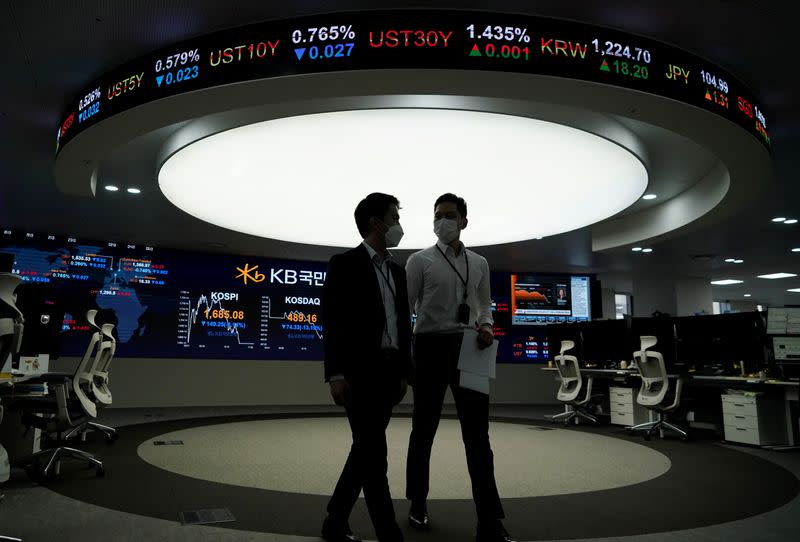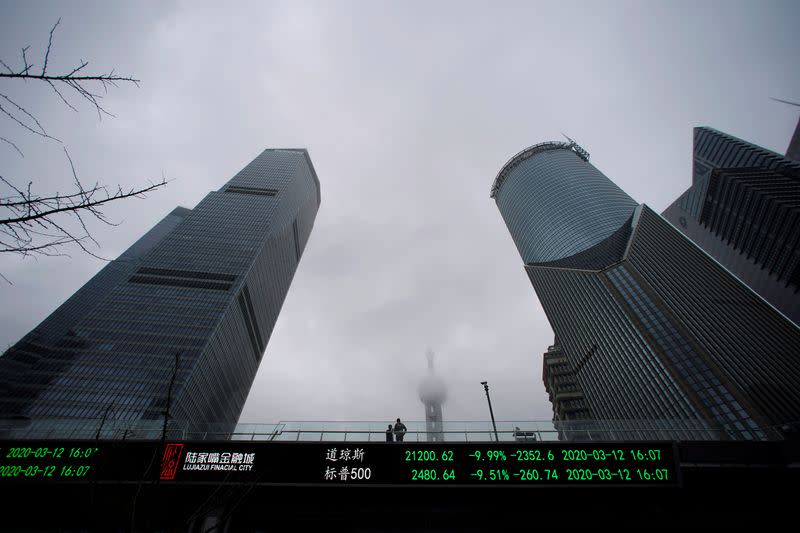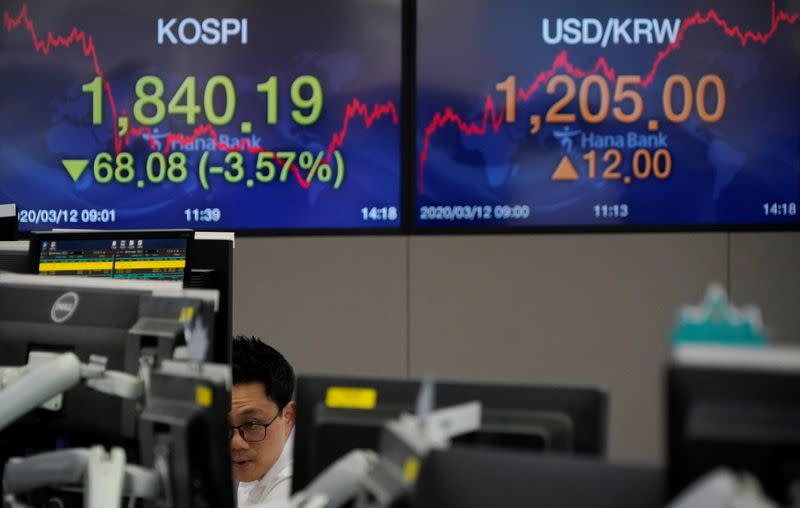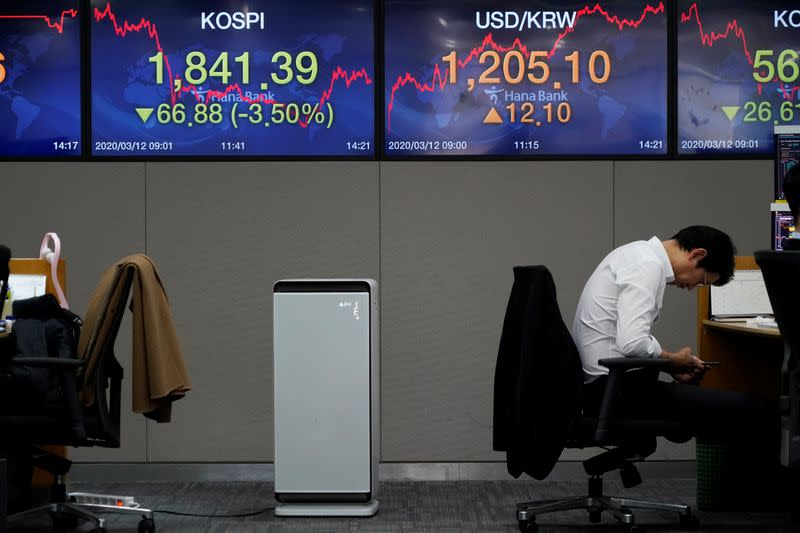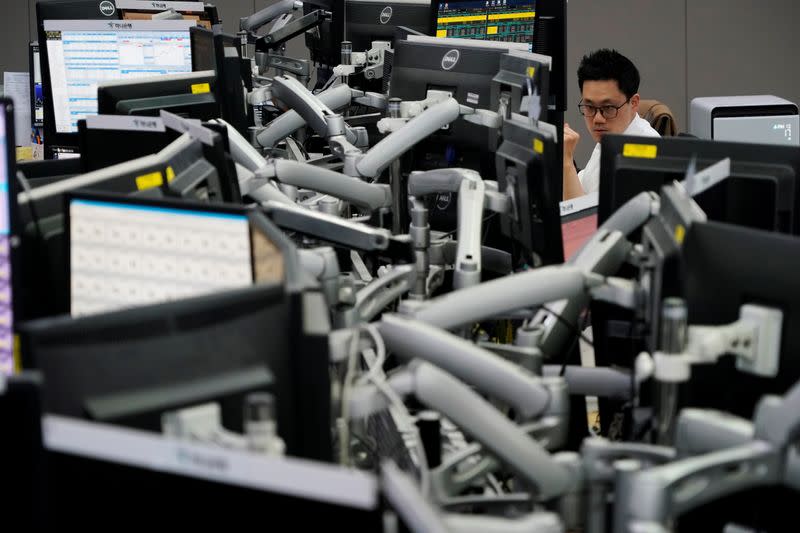Late Wall Street rally leads global stocks higher; oil also jumps
By Rodrigo Campos
NEW YORK (Reuters) - A gauge of stocks across the globe bounced back on Friday led by a late rally on Wall Street, after U.S. President Donald Trump freed $50 billion to tackle the novel coronavirus pandemic.
Oil prices shot higher after Trump, in the same speech, said that the United States would take advantage of the recent sharp decline in prices to fill the U.S. strategic reserves of oil "right up to the top."
Trump's declaration of a national emergency over the virus gave a shot to stocks which had only partly reversed the sharp decline from Thursday. Financial markets closed a week marked by anxiety over the economic effects of the fast-spreading disease.
"It’s probably too premature to signal the all-clear, but we’re definitely taking steps in the right directions,” said Michael Arone, chief investment strategist at State Street Global Advisors in Boston. Markets had been disappointed in the initial response to the coronavirus outbreak, he said.
"These are the right steps and the market is now saying, ‘OK, governments, central banks and society as a whole gets it and they’re moving forward.’”
Two weeks ago, Trump had called the now-pandemic a "hoax" meant to damage his presidency.
Volatility is seen remaining high, with sharp moves expected in both directions and across asset classes. The S&P 500 closed up 9.3% a day after falling 9.5%. The index's weekly decline was 8.8%.
On Friday, the Dow Jones Industrial Average rose 1,985 points, or 9.36%, to 23,185.62, the S&P 500 gained 230.38 points, or 9.29%, to 2,711.02 and the Nasdaq Composite added 673.07 points, or 9.35%, to 7,874.88.
Earlier, the pan-European STOXX 600 index rose 1.43%.
MSCI's gauge of stocks across the globe gained 5.27% after falling by the largest percentage on record on Thursday. Its weekly decline was 12.4%.
Nikkei futures rose 5.63%.
U.S. Treasury yields rose as stocks rallied and as liquidity remained scarce.
Benchmark 10-year notes last fell 41/32 in price to yield 0.9829%, from 0.852% late on Thursday.
Justin Hoogendoorn, head of fixed income strategy and analytics at Piper Sandler in Chicago, said there were "very little bids" in the market.
"It really does scream volatility, scream that there's a lack of liquidity in the marketplace," he said.
Italy, where the COVID-19 death toll shot past 1,000 people, saw its borrowing costs spike by about 73 basis points this week - the most for any week since 1994.
Bond yields rose across the euro zone as investors' expectations grew for fiscal stimulus in the region to combat the coronavirus pandemic. [GVD/EUR]
U.S. crude rose 4.54% to $31.73 per barrel and Brent was last at $34.97, up 5.27% on the day. Despite the sharp gains, oil prices posted their largest weekly drops since 2008.
The dollar extended its previous session's gains, while the yen felt the pressure of risk-on trading. Market participants said signs of dollar funding stress persist and policymakers probably need to do even more.
"Underlying concerns regarding the economic fallout from the coronavirus on credit markets broadly remain," said Shaun Osborne, chief FX strategist at Scotiabank in Toronto.
"It may be tempting to look for signs of a low in global stocks but with the underlying issue - the coronavirus - still unchecked, we think that is premature at this point," he added.
The dollar index rose 1.019%, with the euro down 0.7% to $1.1105.
The Japanese yen weakened 3.05% versus the greenback at 107.94 per dollar, while sterling was down 2.3% on the day.
(Reporting by Rodrigo Campos; additional reporting by Gertrude Chavez-Dreyfuss, Stephanie Kelly, Herb Lash and Chuck Mikolajczak in New York and Karen Pierog in Chicago; Editing by Steve Orlofsky, Nick Zieminski and Cynthia Osterman)

 Yahoo Finance
Yahoo Finance 